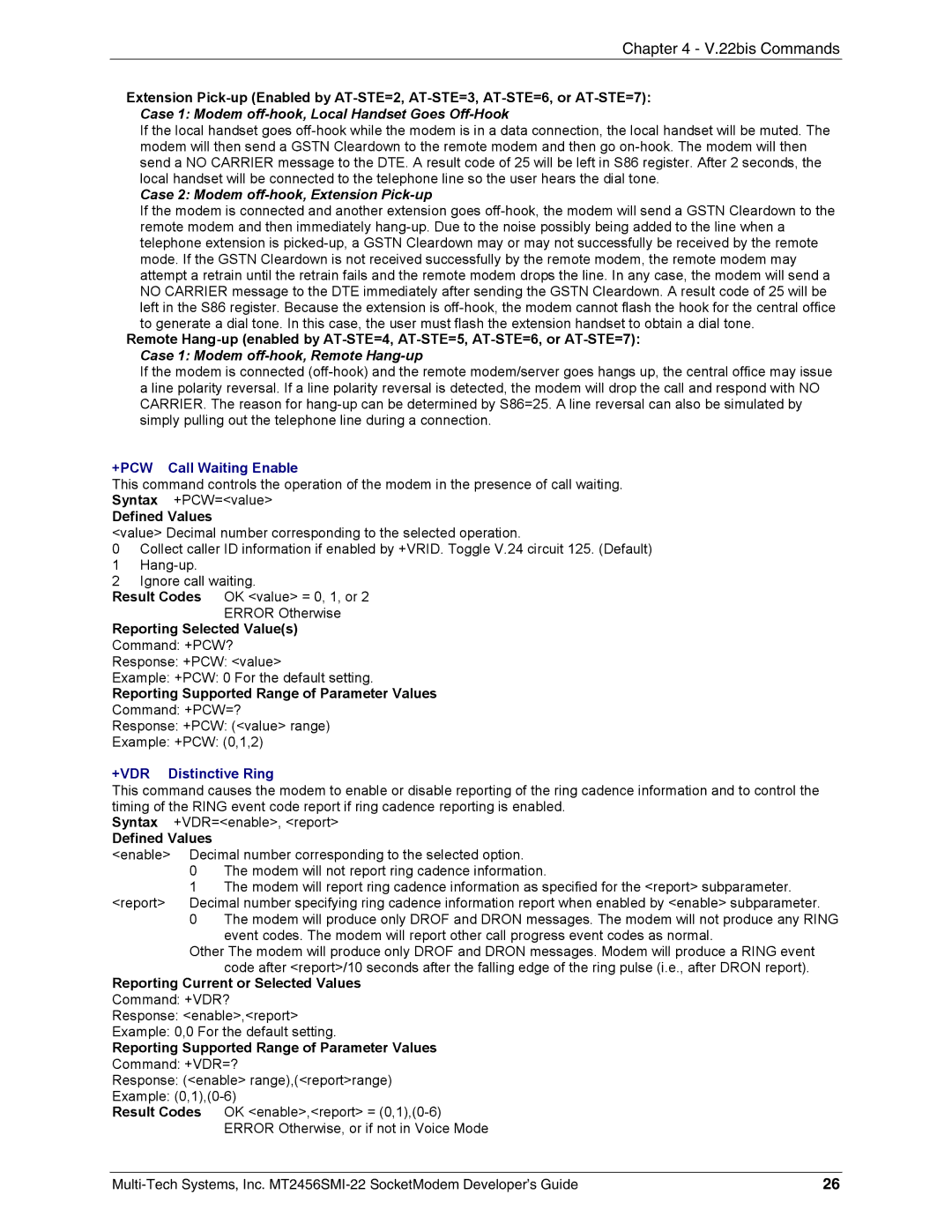
Chapter 4 - V.22bis Commands
Extension
Case 1: Modem off-hook, Local Handset Goes Off-Hook
If the local handset goes
Case 2: Modem off-hook, Extension Pick-up
If the modem is connected and another extension goes
Remote
Case 1: Modem off-hook, Remote Hang-up
If the modem is connected
+PCW Call Waiting Enable
This command controls the operation of the modem in the presence of call waiting.
Syntax +PCW=<value>
Defined Values
<value> Decimal number corresponding to the selected operation.
0Collect caller ID information if enabled by +VRID. Toggle V.24 circuit 125. (Default)
1
2Ignore call waiting.
Result Codes OK <value> = 0, 1, or 2
ERROR Otherwise
Reporting Selected Value(s)
Command: +PCW?
Response: +PCW: <value>
Example: +PCW: 0 For the default setting.
Reporting Supported Range of Parameter Values
Command: +PCW=?
Response: +PCW: (<value> range)
Example: +PCW: (0,1,2)
+VDR Distinctive Ring
This command causes the modem to enable or disable reporting of the ring cadence information and to control the timing of the RING event code report if ring cadence reporting is enabled.
Syntax +VDR=<enable>, <report>
Defined Values
<enable> Decimal number corresponding to the selected option.
0The modem will not report ring cadence information.
1The modem will report ring cadence information as specified for the <report> subparameter.
<report> Decimal number specifying ring cadence information report when enabled by <enable> subparameter.
0 The modem will produce only DROF and DRON messages. The modem will not produce any RING event codes. The modem will report other call progress event codes as normal.
Other The modem will produce only DROF and DRON messages. Modem will produce a RING event code after <report>/10 seconds after the falling edge of the ring pulse (i.e., after DRON report).
Reporting Current or Selected Values
Command: +VDR?
Response: <enable>,<report>
Example: 0,0 For the default setting.
Reporting Supported Range of Parameter Values
Command: +VDR=?
Response: (<enable> range),(<report>range)
Example:
Result Codes OK <enable>,<report> =
ERROR Otherwise, or if not in Voice Mode
26 |
